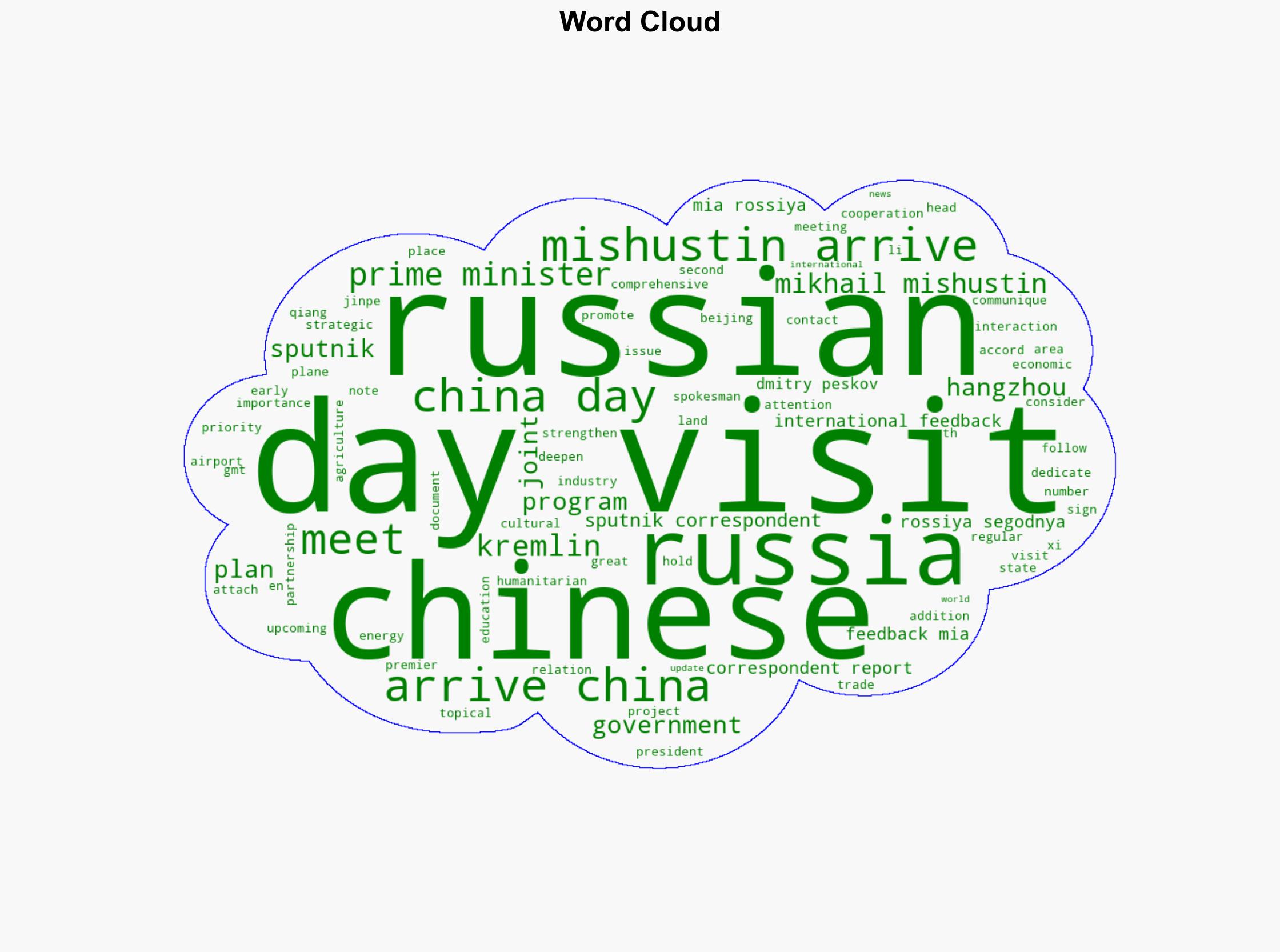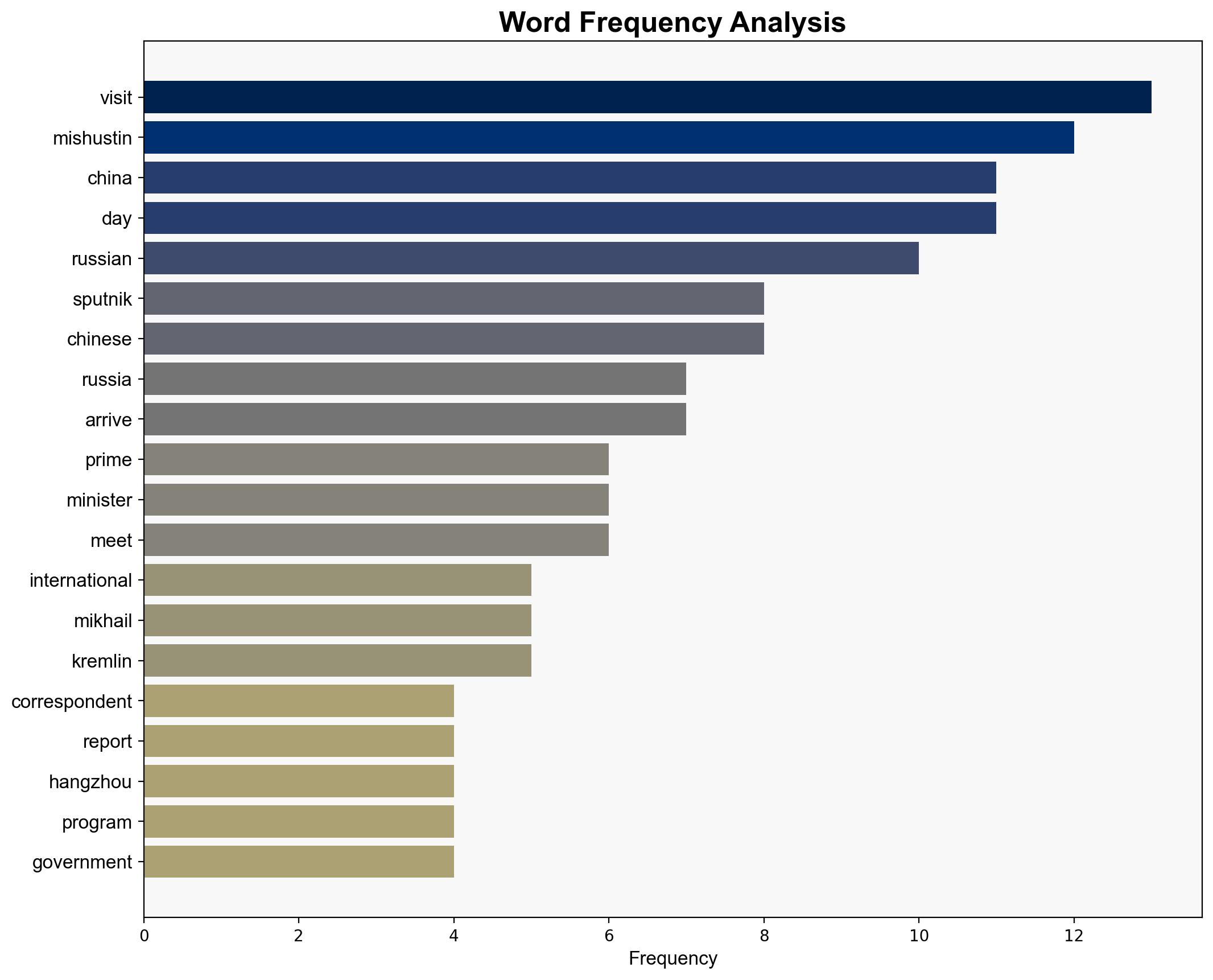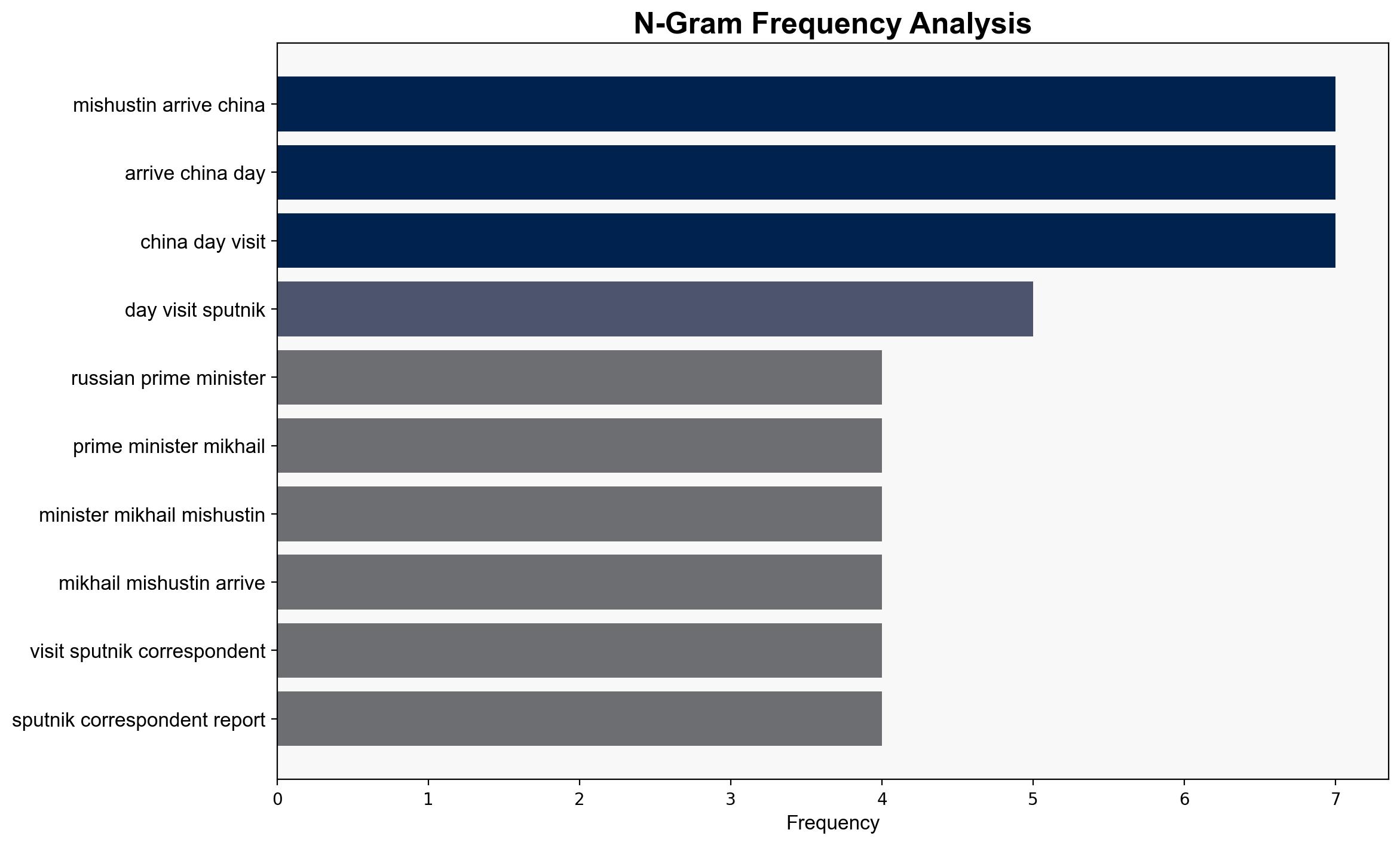Russia’s Mishustin Arrives in China for 2-Day Visit – Sputnikglobe.com
Published on: 2025-11-03
Intelligence Report: Russia’s Mishustin Arrives in China for 2-Day Visit – Sputnikglobe.com
1. BLUF (Bottom Line Up Front)
The visit of Mikhail Mishustin to China is likely aimed at reinforcing the strategic partnership between Russia and China, with a focus on economic and cultural cooperation. The most supported hypothesis is that this visit seeks to solidify bilateral ties amidst global geopolitical tensions. Confidence level: Moderate. Recommended action: Monitor developments in Sino-Russian agreements, particularly in energy and technology sectors.
2. Competing Hypotheses
1. **Hypothesis A**: The visit is primarily a diplomatic gesture to reaffirm the strategic partnership between Russia and China, focusing on economic collaboration and cultural exchanges.
2. **Hypothesis B**: The visit is a strategic maneuver to counterbalance Western influence and establish a stronger geopolitical alliance, potentially including military cooperation.
Using the Analysis of Competing Hypotheses (ACH 2.0), Hypothesis A is better supported by the emphasis on trade, economic, and cultural cooperation in the source text. Hypothesis B lacks explicit evidence in the current intelligence but remains plausible given the geopolitical context.
3. Key Assumptions and Red Flags
– **Assumptions**: It is assumed that both nations are equally committed to deepening their partnership. The focus on economic and cultural cooperation is genuine and not a cover for other strategic objectives.
– **Red Flags**: The absence of detailed information on military or security discussions could indicate a deliberate omission. The repetitive nature of the report may suggest an attempt to emphasize certain narratives while downplaying others.
4. Implications and Strategic Risks
– **Economic**: Strengthened economic ties could lead to increased Russian-Chinese influence in global markets, potentially challenging Western economic interests.
– **Geopolitical**: A closer alliance may shift regional power dynamics, particularly in Asia-Pacific, affecting U.S. and EU strategic interests.
– **Cyber**: Enhanced cooperation could extend to cybersecurity, posing risks of increased cyber capabilities against Western targets.
– **Psychological**: The visit may be used as a propaganda tool to project unity and strength, influencing public perception domestically and internationally.
5. Recommendations and Outlook
- Monitor the outcomes of the visit, particularly any signed agreements or communiques, for indications of deeper strategic alignment.
- Engage in diplomatic dialogues with both nations to understand their long-term strategic goals.
- Scenario Projections:
- Best Case: The visit results in mutually beneficial economic agreements without escalating geopolitical tensions.
- Worst Case: The visit leads to a formalized military alliance, heightening global tensions.
- Most Likely: Continued economic cooperation with cautious strategic alignment.
6. Key Individuals and Entities
– Mikhail Mishustin
– Li Qiang
– Xi Jinping
– Dmitry Peskov
7. Thematic Tags
national security threats, cybersecurity, counter-terrorism, regional focus





